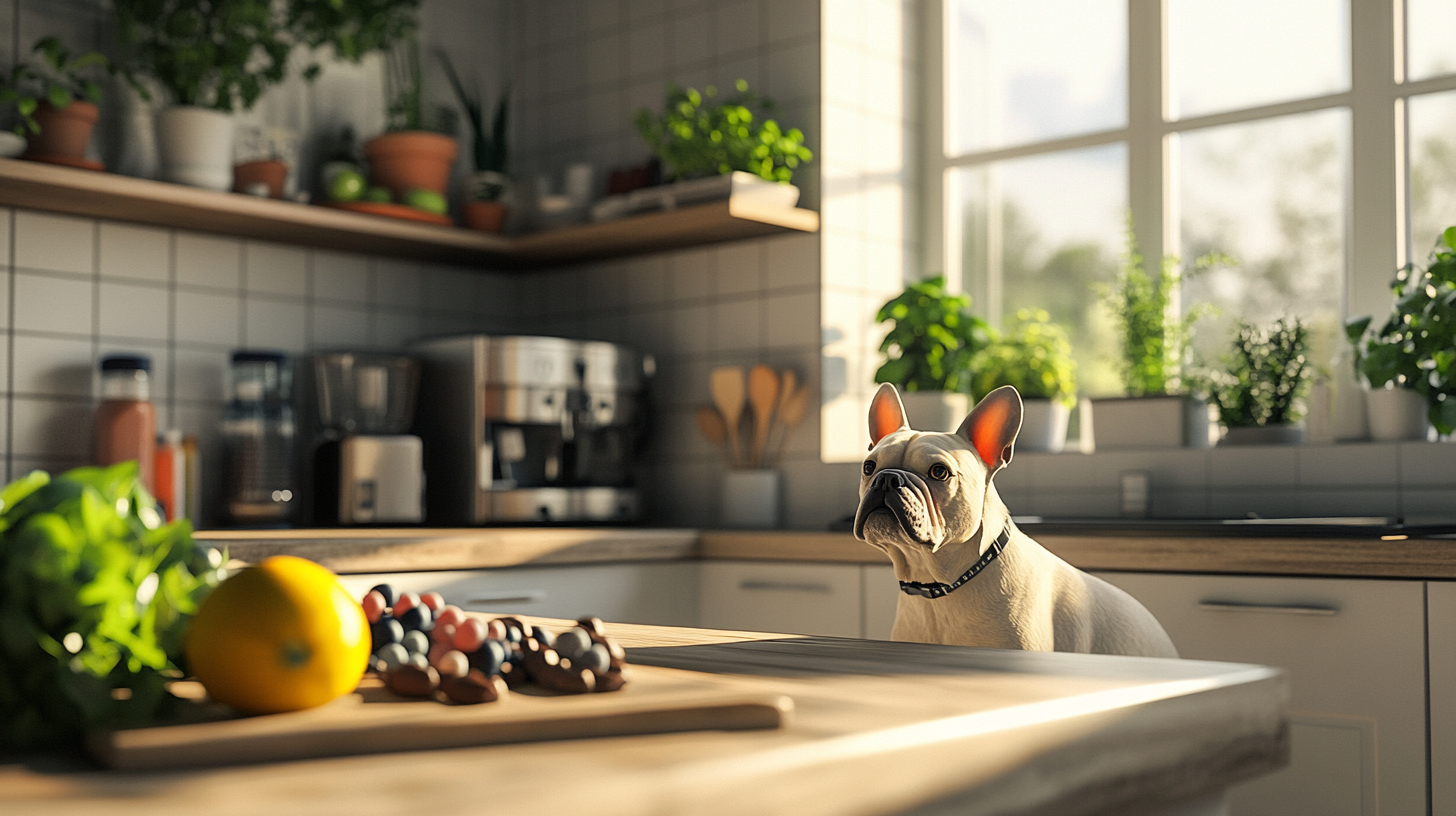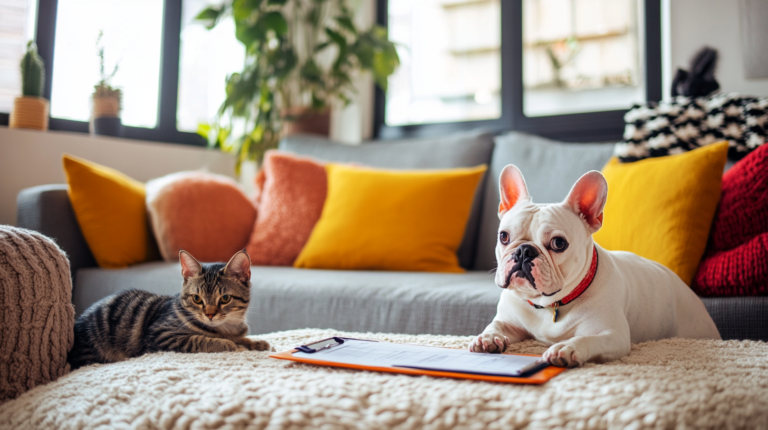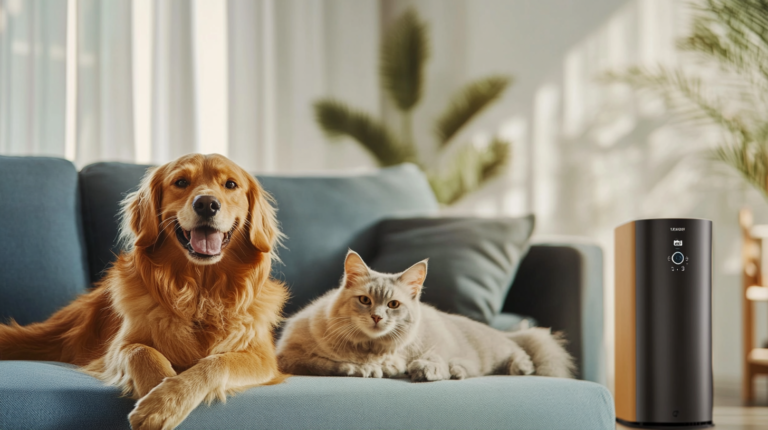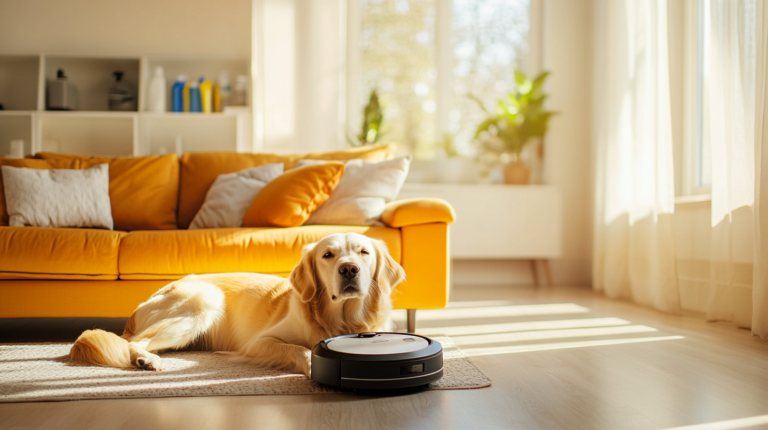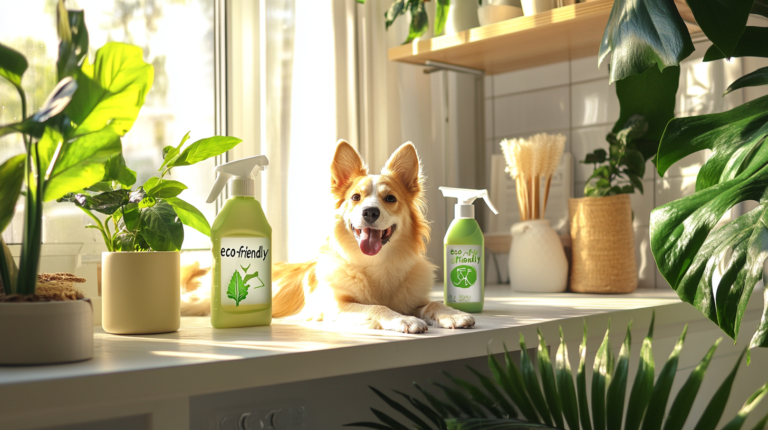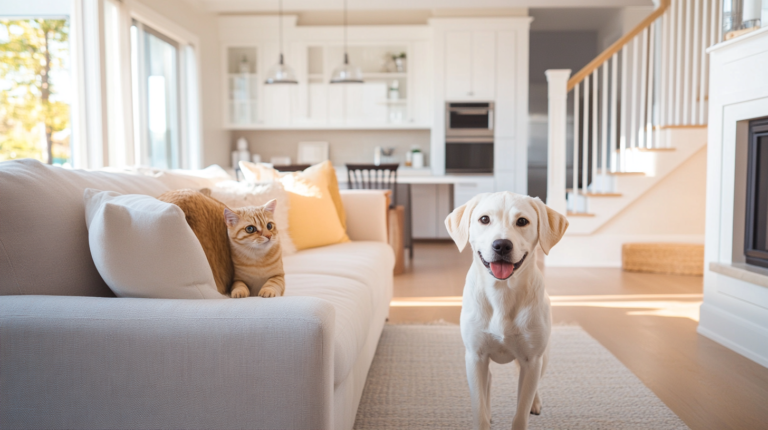Discover the top 5 household pet hazards threatening your furry friends’ safety. Learn prevention strategies and emergency responses to protect your pets from common dangers at home.
Table of Contents
Introduction: The Hidden Dangers in Your Home
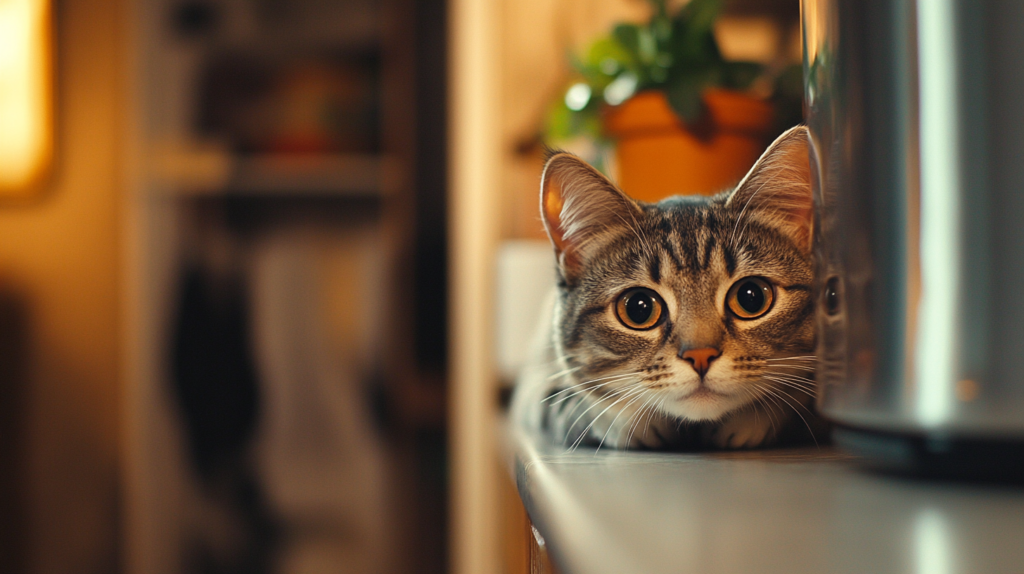
Your home is supposed to be a safe haven—not just for you, but for your beloved pets as well. Yet, many pet owners are unaware that their homes harbor numerous potential household pet hazards that could seriously harm their furry companions. According to the ASPCA Animal Poison Control Center, they receive over 200,000 cases of potential pet poisonings each year, with the majority occurring within the home environment.
As responsible pet parents, recognizing these household pet hazards is essential to creating a safe environment where your pets can thrive. From common foods that are toxic to pets to seemingly harmless houseplants that can cause severe reactions, identifying and addressing these dangers could potentially save your pet’s life.
In this comprehensive guide, we’ll explore the top five household pet hazards that pose significant risks to cats, dogs, and other common pets. We’ll provide practical advice on how to pet-proof your living spaces, recognize symptoms of poisoning or injury, and steps to take in case of an emergency. Whether you’re a new pet owner or have shared your home with animals for years, this information will help ensure your home remains a safe sanctuary for all its occupants.
1. Toxic Foods: Everyday Edibles That Spell Danger
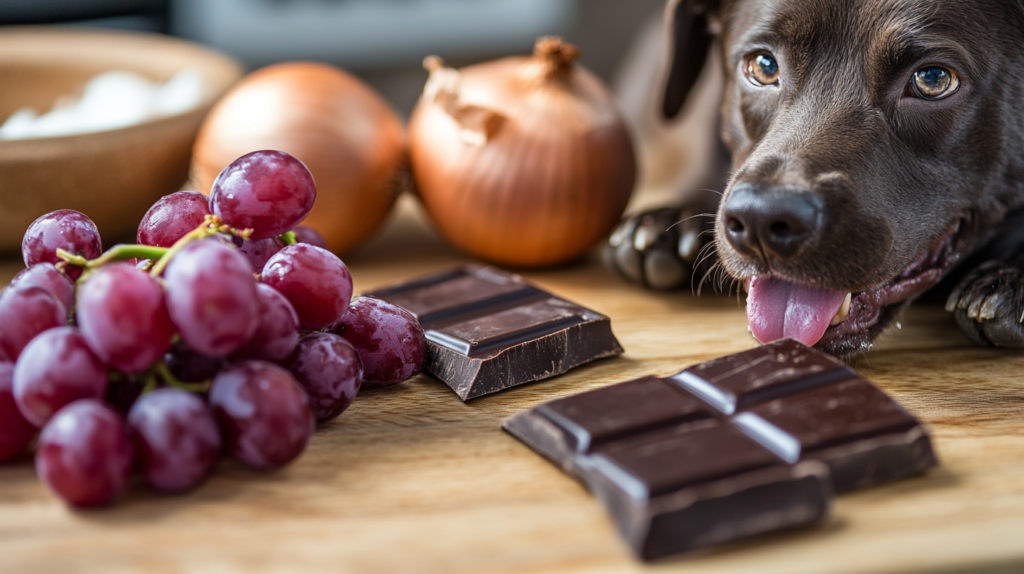
When it comes to household pet hazards, what’s perfectly safe for humans can be deadly for pets. Many common foods found in almost every kitchen present serious health risks to our animal companions.
Chocolate and Caffeine Products
Chocolate contains theobromine and caffeine, stimulants that pets cannot metabolize effectively. The darker the chocolate, the more dangerous—with baking chocolate and high-quality dark chocolate being the most toxic.
Danger Level: High Affects: Dogs, cats, and most small mammals Symptoms: Vomiting, diarrhea, increased thirst, restlessness, rapid breathing, muscle tremors, seizures, heart arrhythmias
A 20-pound dog can be seriously affected by just 2 ounces of baker’s chocolate or 20 ounces of milk chocolate. During holidays like Valentine’s Day, Easter, and Christmas, veterinary emergency visits for chocolate toxicity spike by up to 200%, according to VCA Animal Hospitals.
Xylitol
This sugar substitute is found in sugar-free gum, candy, some peanut butters, baked goods, and even some toothpastes. For dogs, xylitol causes a dangerous insulin release that can lead to liver failure.
Danger Level: Extremely high for dogs Affects: Primarily dogs, though caution is advised for all pets Symptoms: Vomiting, decreased activity, weakness, staggering, collapse, seizures
As little as 50 milligrams of xylitol per pound of body weight can cause hypoglycemia in dogs, while higher doses can cause liver failure. The number of xylitol poisoning cases has increased by 108% in the last decade as this sweetener has become more common in household products.
Grapes, Raisins and Currants
These common fruits can cause acute kidney failure in dogs, and potentially in cats as well.
Danger Level: High Affects: Primarily dogs, potentially cats Symptoms: Vomiting, lethargy, reduced urination, abdominal pain, weakness, dehydration
What makes this household pet hazard particularly concerning is that the toxic mechanism isn’t fully understood, and sensitivity varies greatly between individual animals. Some pets may eat a few grapes with no apparent effect, while others suffer kidney failure from a single grape.
Onions, Garlic, and Related Plants
All members of the allium family (onions, garlic, chives, leeks, shallots) contain compounds that can damage red blood cells in pets, leading to hemolytic anemia.
Danger Level: Moderate to high Affects: Dogs, cats (cats are more susceptible) Symptoms: Lethargy, weakness, reduced appetite, pale gums, reddish urine, elevated heart and respiratory rates
Garlic is approximately five times more potent than onions. Even garlic and onion powders used as seasonings can be toxic. The effects may not be immediate and can appear days after consumption.
Prevention Tips for Food Hazards
- Store dangerous foods in securely closed containers or cabinets that pets cannot access
- Educate all family members and guests about foods that should never be shared with pets
- Be especially vigilant during holidays and gatherings when more food is likely to be accessible
- Consider using baby locks on pantry doors if your pet is particularly determined
- Keep purses, backpacks, and grocery bags out of reach, as they may contain toxic foods
Veterinarian Insight: “Most pet owners know chocolate is dangerous, but many are surprised by how many common foods pose serious risks. I recommend creating a ‘pet-safe’ kitchen where high-risk items are consistently stored in designated pet-inaccessible areas.” — Dr. Sarah Miller, DVM, Pet Emergency Specialist
2. Toxic Houseplants: Beauty That Bites
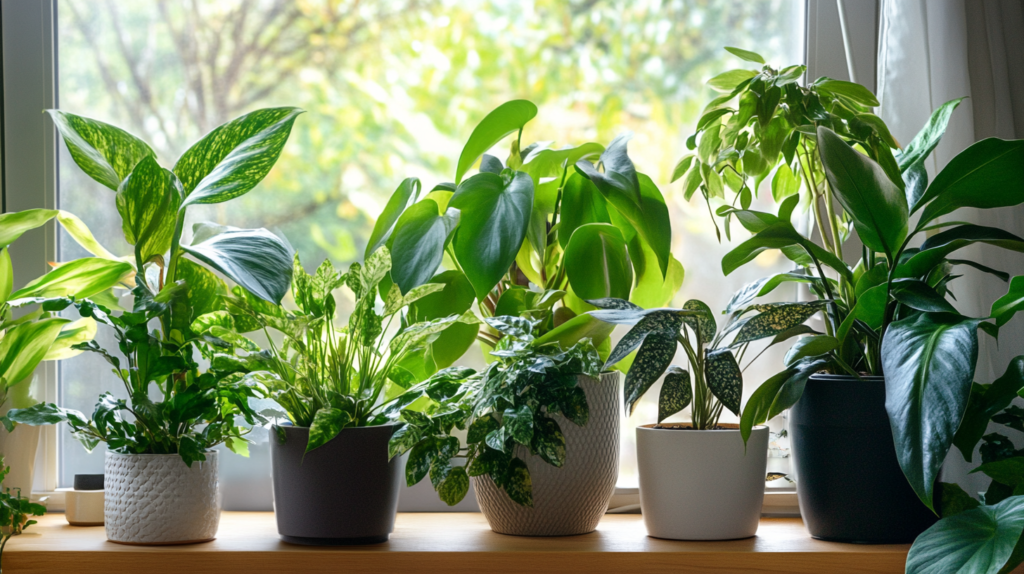
Many pet owners don’t realize that some of the most common decorative plants in our homes rank high among household pet hazards. What adds aesthetic beauty to your living space could lead to serious health consequences for curious pets who like to chew or brush against vegetation.
Lilies
Perhaps the most notorious plant toxin for cat owners, true lilies (including Easter, Asiatic, tiger, and day lilies) can cause kidney failure in cats with even minimal exposure.
Danger Level: Extremely high for cats Affects: Primarily cats (dogs may experience mild gastrointestinal upset) Toxic Parts: All parts of the plant, including pollen, leaves, stems, flowers, and even the water from the vase Symptoms: Vomiting, lethargy, dehydration, increased or decreased urination, disorientation
According to the Pet Poison Helpline, lily ingestion is one of the top 10 toxicity cases they handle for cats. Even small exposures, such as a cat grooming pollen off its fur, can be fatal without immediate treatment.
Sago Palm
This ornamental plant is extremely toxic to all pets and is becoming increasingly popular as both an indoor and outdoor plant.
Danger Level: Extremely high Affects: All pets, especially dogs Toxic Parts: All parts, with seeds (nuts) containing the highest concentration of toxins Symptoms: Vomiting, bloody diarrhea, jaundice, increased thirst, liver failure, seizures
The mortality rate for sago palm poisoning is estimated at 50-75%, even with aggressive treatment. Just one or two seeds can be lethal to a medium-sized dog.
Philodendron and Pothos
These popular houseplants are among the most common household pet hazards due to their ubiquity and toxicity.
Danger Level: Moderate to high Affects: Dogs, cats, and other small pets Toxic Parts: All parts contain calcium oxalate crystals Symptoms: Immediate oral pain, drooling, vomiting, difficulty swallowing, swelling of lips, tongue, and throat
While rarely fatal, exposure can cause significant discomfort and, in severe cases, swelling that might compromise breathing.
Aloe Vera
Despite its healing properties for humans, aloe vera contains compounds called anthraquinone glycosides that can cause gastrointestinal distress in pets.
Danger Level: Moderate Affects: Dogs, cats, and small mammals Toxic Parts: The outer leaf contains most of the toxic compounds Symptoms: Vomiting, diarrhea, lethargy, urine color changes, tremors (in severe cases)
Prevention Tips for Plant Hazards
- Research all plants before bringing them into a home with pets
- Keep toxic plants completely out of reach or opt for pet-safe alternatives
- Consider creating a designated “pet garden” with safe plants for curious pets to investigate
- Use hanging planters for toxic plants that cats might otherwise access
- For outdoor gardens, create physical barriers around toxic plants
Expert Insight: “We see cases of lily toxicity in cats spike around Easter and Mother’s Day when these flowers are commonly gifted. Many people don’t realize that a $15 bouquet could lead to thousands in veterinary bills or even loss of a beloved pet.” — Jessica Thompson, Certified Veterinary Technician and Poison Control Specialist
Pet-Safe Alternatives: Boston fern, spider plant, areca palm, Swedish ivy, and money tree are all considered safer options for homes with pets.
3. Medications and Household Chemicals: Powerful Poisons
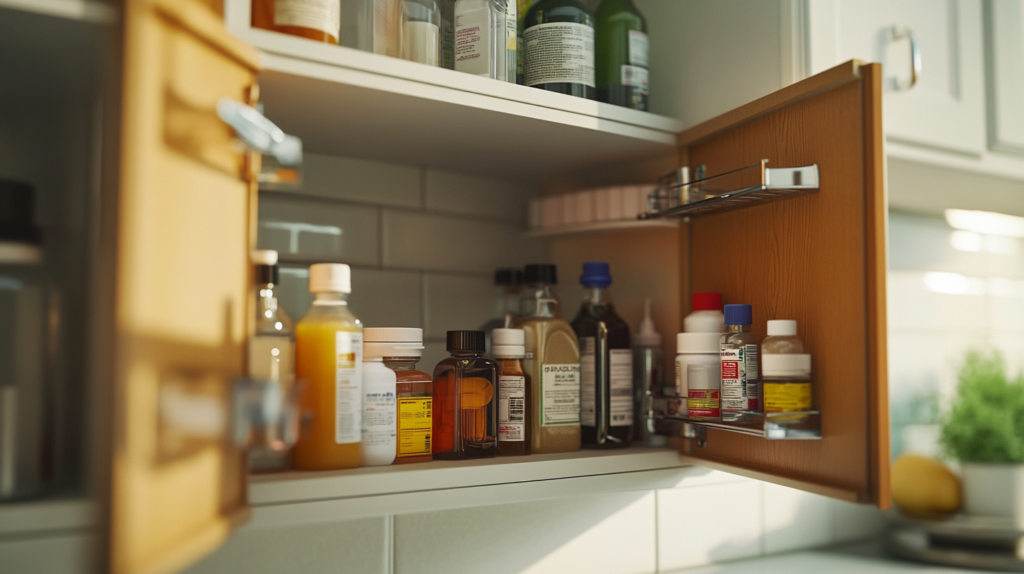
Among the most serious household pet hazards are the medications and chemicals we use daily. These substances are designed to be potent and can have devastating effects on pets, whose smaller bodies and different metabolisms can’t process these compounds the way humans do.
Human Medications
Human medications consistently top the list of household pet hazards reported to poison control centers. Common problematic medications include:
Over-the-Counter Pain Relievers
Danger Level: Extremely high Specific Concerns:
- NSAIDs (ibuprofen, naproxen): Can cause gastrointestinal ulcers and kidney failure in dogs and cats, even in small doses
- Acetaminophen: Particularly toxic to cats, causing liver failure and destruction of red blood cells; as little as one regular-strength tablet can be fatal to a cat
- Aspirin: Can cause serious gastrointestinal bleeding and internal damage
Symptoms: Vomiting (sometimes with blood), diarrhea, lethargy, increased thirst and urination, abdominal pain, pale or yellow gums
Antidepressants and Anti-anxiety Medications
Danger Level: High Specific Concerns: These medications can cause central nervous system problems, including dangerous changes in heart rate, body temperature, and blood pressure Symptoms: Agitation, aggression, disorientation, vocalization, tremors, seizures, elevated heart rate and blood pressure
Blood Pressure Medications
Danger Level: High Specific Concerns: Beta-blockers and ACE inhibitors can cause dangerous drops in blood pressure in pets Symptoms: Weakness, collapse, lethargy, slow heart rate, vomiting
A study published in the Journal of Veterinary Emergency and Critical Care found that medication ingestion accounts for approximately 25% of all poisoning cases in small animals, with NSAIDs being the most common culprit.
Cleaning Products
Bleach and Ammonia-Based Cleaners
Danger Level: Moderate to high Specific Concerns: These products can cause chemical burns to the mouth, esophagus, and stomach if ingested, and respiratory distress if fumes are inhaled Symptoms: Drooling, vomiting, respiratory difficulty, chemical burns visible on mouth or tongue
Drain Cleaners and Oven Cleaners
Danger Level: Extremely high Specific Concerns: These highly caustic products can cause severe internal burns Symptoms: Extreme pain, drooling, inability to eat or drink, vomiting blood, collapse
Antifreeze (Ethylene Glycol)
Danger Level: Extremely high Specific Concerns: Antifreeze has a sweet taste attractive to pets but causes severe kidney damage Symptoms: Initial signs include appearing “drunk” (wobbly, disoriented), excessive thirst and urination, followed by lethargy, vomiting, and eventually kidney failure Time Sensitivity: Treatment must begin within hours of ingestion for the best chance of survival
As little as one tablespoon of antifreeze can be lethal to a 20-pound dog, and just one teaspoon can kill a cat.
Rodenticides and Pesticides
Danger Level: Extremely high Specific Concerns:
- Anticoagulant rodenticides: Prevent blood clotting, causing internal bleeding
- Bromethalin-based products: Cause brain swelling with no antidote
- Cholecalciferol (Vitamin D3) based products: Cause calcium overload, leading to kidney failure
Symptoms: Vary by type but can include lethargy, weakness, pale gums, bleeding (from mouth, nose, in stool, etc.), seizures, paralysis, and collapse
Prevention Strategies for Chemical Hazards
- Store all medications (prescription and over-the-counter) in cabinets completely inaccessible to pets
- Never leave pills on countertops, in purses, or in pill organizers that pets can access
- Take medications in areas away from pets, and check floors for dropped pills
- Store all cleaning products and chemicals in closed cabinets with child-proof locks if necessary
- Clean up antifreeze spills immediately and thoroughly
- Consider pet-safe alternatives for household cleaners and pest control
- If using rodenticides or pesticides, use tamper-resistant bait stations placed where pets absolutely cannot access them
Case Study: “Last year we treated a 4-year-old Labrador who had ingested several ibuprofen tablets left on a nightstand. Despite aggressive treatment including activated charcoal, IV fluids, gastroprotectants, and kidney support, the dog suffered acute kidney injury requiring five days of hospitalization. The $4,000 treatment could have been avoided by simply storing medication properly.” — Emergency Veterinary Hospital of Chicago
4. Small Objects and Choking Hazards: The Lurking Danger
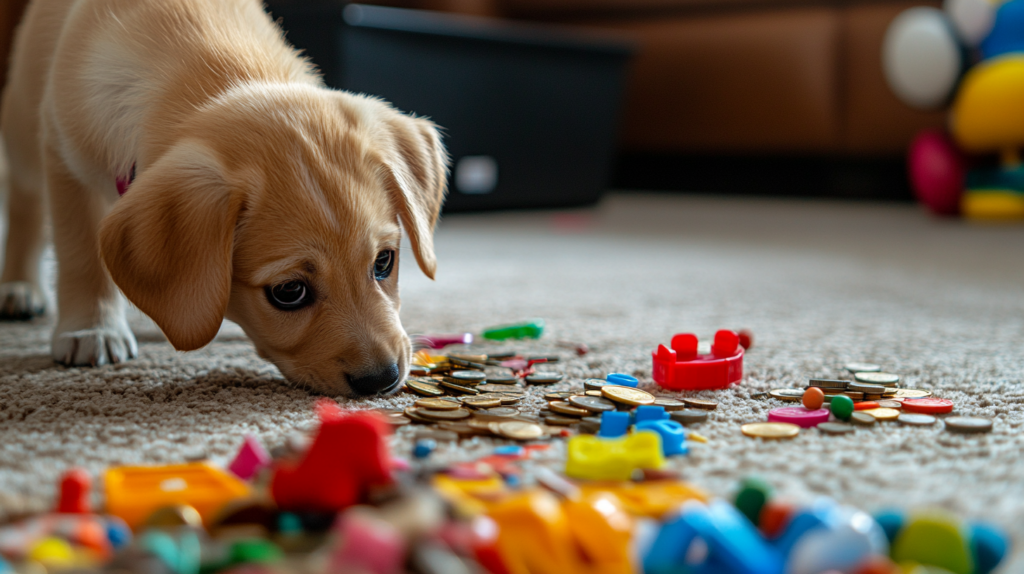
Pets, especially puppies and kittens, explore their world with their mouths, making small objects among the most frequently encountered household pet hazards. Foreign body ingestion can lead to choking, intestinal blockages, or even toxic reactions depending on the object.
Children’s Toys
Danger Level: Moderate to high Specific Concerns: Small parts, especially from building sets, dolls, and action figures, can cause intestinal obstructions Most Dangerous: Toys with button batteries, magnets, or small detachable parts
According to a survey of veterinary surgeons, approximately 30% of foreign body removals involve components from children’s toys. The combination of bright colors, interesting textures, and small size makes these items particularly attractive to curious pets.
Clothing Items
Danger Level: Moderate to high Specific Concerns:
- Socks and underwear: Particularly attractive to dogs and can cause intestinal blockages
- Items with buttons or drawstrings: Can cause linear foreign body obstructions if the string portion becomes anchored while the rest travels through the digestive tract
Most Dangerous: Linear foreign bodies (strings, ribbons, dental floss) can cause the intestines to “accordion” and potentially cut through intestinal walls
Household Objects
Danger Level: Varies by object Specific Concerns:
- Rubber bands and hair ties: Attractive but potentially obstructive
- Coins: Both choking hazards and toxic concerns (especially pennies minted after 1982, which contain zinc that can cause hemolytic anemia)
- Batteries: Can cause chemical burns and release toxic substances
- Silica gel packets: Often marked “do not eat” and found in new products; can cause gastrointestinal obstruction
Holiday-Specific Hazards
Danger Level: High during seasonal periods Specific Concerns:
- Christmas: Tinsel, ornament hooks, small ornaments, Christmas tree water additives
- Easter: Plastic grass, small toys from eggs
- Halloween: Candy wrappers, small decorations
- All gift-giving occasions: Ribbon, small parts from new products
Signs of Foreign Body Ingestion or Obstruction
- Vomiting (especially repeated attempts)
- Lethargy
- Loss of appetite
- Abdominal pain or tenderness
- Constipation or diarrhea
- Drooling (may indicate something stuck in the throat)
- Difficulty defecating or straining
The Hidden Danger: Xylitol and Other Toxins in Everyday Objects
Some common household items contain hidden toxins that pet owners might not be aware of:
- Sugar-free gum and mints: Often contain xylitol, extremely toxic to dogs
- Remote controls: May contain button batteries that can release caustic substances
- Certain children’s putty or slime: May contain borax or other toxic compounds
- Cigarettes and e-cigarettes: Contain nicotine, which is highly toxic to pets
Prevention Tips for Choking and Ingestion Hazards
- Regularly get down at pet level and examine your home for small objects
- Establish and enforce strict toy separation between children’s toys and pet toys
- Use covered hampers for dirty laundry
- Keep craft supplies, sewing materials, and small household objects in closed containers
- Be especially vigilant during holiday seasons when new items enter the home
- Consider using baby gates to restrict access to areas where small objects are used (craft rooms, children’s playrooms)
- Teach children to clean up toys completely after play
Emergency Response Guideline: “If you suspect your pet has ingested a foreign object, do not induce vomiting without consulting a veterinarian first. Some objects can cause more damage coming back up, and certain situations require immediate surgical intervention rather than vomiting.” — American Veterinary Medical Association
5. Environmental and Physical Hazards: The Overlooked Dangers

Beyond toxins and choking hazards, many homes contain environmental and physical household pet hazards that put pets at risk of injury, entrapment, or escape.
Window and Door Hazards
Danger Level: Moderate to high Specific Concerns:
- Window screens: Not designed to hold the weight of pets and can easily give way
- Blinds and curtain cords: Can entangle pets, causing strangulation
- Automatic doors: Can close on pets, causing crushing injuries
- Unsecured windows: Fall risks, especially for cats in high-rise buildings
Statistics from veterinary emergency clinics indicate that “high-rise syndrome” (falls from windows or balconies) accounts for thousands of injuries annually, with an average treatment cost of $2,000-$5,000.
Temperature-Related Hazards
Danger Level: High Specific Concerns:
- Space heaters: Can cause burns if touched or tipped over, creating fire risks
- Radiators and heating vents: Attractive warming spots that can cause burns
- Hot stoves and ovens: Curious pets may jump on hot surfaces
- Poorly ventilated areas: Can lead to heat stroke in hot weather
A study published in the Journal of Veterinary Emergency and Critical Care found that heat-related illness has a mortality rate of approximately 50%, even with treatment, making prevention crucial.
Water Hazards
Danger Level: Moderate to high Specific Concerns:
- Toilets with cleaning tablets: Contain chemicals that can be toxic if drunk
- Swimming pools and hot tubs: Drowning risks, especially for older pets or breeds not built for swimming
- Bathtubs: Drowning risk if pets fall in and cannot get out
Entrapment Areas
Danger Level: Moderate Specific Concerns:
- Reclining furniture: Moving parts can trap and crush small pets
- Washers and dryers: Attractive sleeping spots with severe consequences if the appliance is used
- Refrigerators and freezers: Pets can become trapped if they climb in unnoticed
- Garage doors: Can crush pets who don’t move when the door is closing
Electrical Hazards
Danger Level: High Specific Concerns:
- Exposed cords: Chewing hazards that can cause electrical burns or electrocution
- Overloaded outlets: Fire risks that affect all household members
- Device charging stations: Multiple electrical hazards in one location
“Electrical cord injuries peak during the holiday season when extra lighting and decorations are present,” notes the Pet Poison Helpline, with puppies and kittens under one year old accounting for 70% of such injuries.
Prevention Strategies for Environmental Hazards
- Window Safety:
- Install sturdy, pet-specific screens
- Use cord-winding devices for blinds
- Limit window openings in high-rise settings
- Temperature Safety:
- Use protective barriers around heating elements
- Never leave pets unattended around open flames
- Ensure adequate ventilation and cooling options during hot weather
- Water Safety:
- Keep toilet lids closed
- Provide supervised access to swimming areas
- Never leave standing water unattended around pets that aren’t strong swimmers
- Entrapment Prevention:
- Check furniture and appliances before operation
- Keep appliance doors closed
- Install safety features on garage doors
- Always know where your pet is before operating moving equipment
- Electrical Safety:
- Use cord covers or cord management systems
- Bitter apple spray on cords to discourage chewing
- Unplug devices when not in use
- Keep charging stations in pet-free areas
Case Study: “We treated a two-year-old cat who suffered third-degree electrical burns after chewing through a phone charging cable. The injury required extensive treatment including surgical debridement of oral tissue, and the cat needed a feeding tube for three weeks while healing. The owner now uses cord protectors throughout the home and has created a dedicated charging area in a closed cabinet.” — Feline Medical Center of Boston
6. Secure Storage: The First Line of Defense

Creating safe storage systems throughout your home is one of the most effective ways to minimize household pet hazards. By developing consistent storage habits, you can significantly reduce your pet’s risk of exposure to dangerous substances or items.
Kitchen Storage Solutions
The kitchen contains many of the most dangerous household pet hazards, making proper storage essential:
Cabinet Security
Effectiveness Rating: High Implementation:
- Install child-proof latches on lower cabinets containing cleaning supplies, trash, or toxic foods
- Reserve high cabinets for the most dangerous items
- Consider magnetic locks that only open with a special key
Pantry Organization
Effectiveness Rating: Moderate to high Implementation:
- Store chocolate, xylitol-containing items, and other toxic foods in sealed containers on high shelves
- Use clear labeling to ensure all family members know which foods are dangerous
- Consider a pantry door that remains closed by default
Trash Management
Effectiveness Rating: High Implementation:
- Use trash cans with secure lids, preferably with foot pedals rather than motion sensors that may activate for curious pets
- Consider storing trash in under-sink cabinets with child locks
- Empty trash containing food scraps promptly
Bathroom and Laundry Room Solutions
These rooms often contain concentrated chemicals and medications:
Medicine Cabinet Security
Effectiveness Rating: Very high Implementation:
- Store all medications (including over-the-counter products) in high cabinets with secure latches
- Keep pill bottles fully closed and in their original containers
- Consider a dedicated, locked medicine box for highly dangerous medications
Cleaning Supply Storage
Effectiveness Rating: High Implementation:
- Never store toxic products under sinks without childproof locks
- Keep all products in their original containers with labels intact
- Consider wall-mounted storage cabinets that can be installed above pet reach
Garage and Outdoor Storage
These areas often contain some of the most lethal household pet hazards:
Chemical Storage
Effectiveness Rating: Extremely important Implementation:
- Store automotive fluids, pesticides, fertilizers, and paint on high shelves in closed cabinets
- Use secondary containment bins for liquids to prevent leaks from becoming accessible
- Be particularly cautious with antifreeze, which has an appealing taste to pets
Tool and Equipment Management
Effectiveness Rating: Moderate to high Implementation:
- Store small parts, batteries, and sharp objects in closed toolboxes
- Hang dangerous tools rather than leaving them on floors or low shelves
- Clean up thoroughly after projects, particularly checking for dropped nails, screws, or wire snippings
General Home Storage Principles
Designated Pet-Free Zones
Effectiveness Rating: Very high Implementation:
- Create certain rooms that remain closed to pets where higher-risk activities occur (crafting, hobbies involving small parts)
- Use baby gates, closed doors, or pet barriers consistently
Visitor Education
Effectiveness Rating: Moderate Implementation:
- Inform guests about keeping personal items (medications, gum, mints) in closed bags placed out of reach
- Be particularly vigilant during parties or gatherings when normal household routines may be disrupted
Expert Perspective: “In my 15 years of veterinary practice, I’ve observed that homes with consistent storage systems for hazardous items have significantly fewer emergency toxicity cases. Creating simple habits—like always placing purses on hooks rather than floors or always keeping certain doors closed—can be lifesaving.” — Dr. Marcus Chen, Emergency Veterinary Services
7. Emergency Preparedness: When Prevention Fails
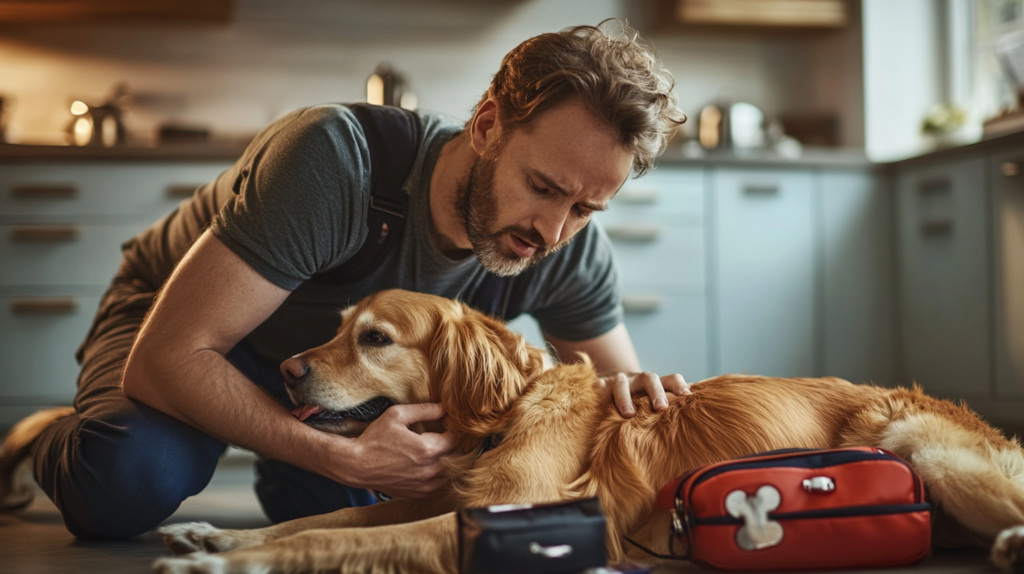
Despite best efforts to eliminate household pet hazards, emergencies can still occur. Being prepared for these situations can make the difference between a successful outcome and tragedy.
Creating a Pet Emergency Plan
Key Components:
- Keep emergency veterinary contact information easily accessible
- Regular veterinarian
- Closest 24-hour emergency facility (with address and precise directions)
- Pet Poison Helpline: 855-764-7661 (fee applies)
- ASPCA Animal Poison Control: 888-426-4435 (fee applies)
- Prepare a pet emergency kit including:
- Copy of vaccination records
- Recent photo of your pet
- Any current medications
- Hydrogen peroxide 3% (only to be used when directed by a veterinarian to induce vomiting)
- Strong-tasting food item (like canned tuna or chicken) to disguise medication if needed
- Pet carrier or transport method
- Blanket for shock or emergency warmth
- Know basic first aid procedures:
- How to check vital signs (normal respiratory rate, heart rate, temperature)
- How to safely restrain an injured animal
- How to apply pressure to bleeding wounds
- How to recognize signs of shock
Poison Response Protocols
DO:
- Call veterinary help immediately before taking action
- Collect packaging or take photos of any suspected ingested substance
- Note the approximate amount ingested and time of exposure
- Follow professional guidance precisely
DON’T:
- Induce vomiting without professional direction (some substances cause more damage coming back up)
- Give home remedies or human medications unless specifically directed by a veterinarian
- Wait to see if symptoms develop—many toxins cause irreversible damage before visible signs appear
- Assume a small amount won’t be harmful (toxicity varies by pet size and specific substance)
Choking and Obstruction Response
For Choking (Pet Cannot Breathe):
- Open the mouth and check for visible objects that can be safely removed
- For small pets, perform the “sweeping” method: hold the pet with its spine against your chest, head down, and deliver firm blows between the shoulder blades
- For larger dogs, perform a modified Heimlich maneuver as directed by your veterinarian
For Suspected Ingestion (Pet Is Breathing):
- Do not attempt to induce vomiting without veterinary guidance
- Monitor for signs of distress, vomiting, or abdominal pain
- Seek immediate veterinary attention, even if the pet seems fine initially
The Importance of Timing
With many household pet hazards, the window for effective treatment is narrow:
- Antifreeze toxicity: Treatment most effective within 8-12 hours
- Rodenticide ingestion: Antidote most effective when given before symptoms appear
- Lily exposure in cats: Kidney damage can begin within 24-48 hours
- Xylitol ingestion: Blood sugar drops can occur within 30-60 minutes
A study by the Animal Medical Center found that pets brought to the veterinarian within 2 hours of toxic exposure had a 95-98% survival rate, while those arriving after 18 hours had a survival rate below 25%.
Financial Preparedness
Options to Consider:
- Pet insurance that covers emergency and toxicity treatment
- Dedicated emergency savings fund for pet care
- Familiarity with veterinary payment plans or care credit options
- Knowledge of local low-cost emergency options
Real-World Perspective: “The difference between a $500 early intervention and a $3,000+ intensive care hospitalization often comes down to how quickly an owner recognizes a problem and seeks help. Having a plan in place before an emergency occurs can save precious minutes when they matter most.” — Veterinary Emergency Group
FAQ: Household Pet Hazards
What should I do if my pet eats something toxic but isn’t showing symptoms yet?
Answer: Don’t wait for symptoms to appear before seeking help. Many toxins cause internal damage before external signs are visible. Contact your veterinarian or a pet poison hotline immediately. Be prepared to provide details about what was consumed, approximately how much, and when it happened. Follow professional guidance precisely—do not induce vomiting unless specifically instructed to do so by a veterinarian, as this can sometimes cause more harm.
Are some pets more likely to get into household hazards than others?
Answer: Yes, personality, age, and species all play roles in risk levels. Puppies and kittens are generally more curious and likely to chew or ingest inappropriate items. Certain dog breeds known for food motivation (like Labradors and Beagles) may be more likely to consume toxic foods. Cats are particularly sensitive to certain toxins like lilies and essential oils, while also being attracted to string-like objects that can cause linear foreign body obstructions. Additionally, pets with anxiety issues or those that engage in pica (eating non-food items) face increased risks.
How can I tell the difference between normal upset stomach and potential poisoning?
Answer: Poisoning often produces more severe or unusual symptoms compared to standard digestive upset. Watch for these red flags that suggest poisoning rather than simple stomach upset: sudden onset of severe symptoms, abnormal behavior (disorientation, staggering, seizures), unusual gum color (very pale, blue, or bright red), excessive drooling, respiratory distress, collapse, or multiple symptoms occurring simultaneously. When in doubt, contact your veterinarian—it’s always better to err on the side of caution with potential household pet hazards.
I have both cats and dogs—how do I manage pet medications safely when one pet’s medication could be toxic to another?
Answer: This requires careful management, as some medications prescribed for dogs can be lethal to cats and vice versa. Administer medications in separate, secured areas. Clean up thoroughly if pills are dropped. Consider using different treats for medication delivery to avoid confusion. Store all pet medications as carefully as you would human medications—in high cabinets or locked containers. Keep detailed records of which medication is for which pet, and ensure all family members understand these distinctions. Some households find color-coding medication containers helpful for quick identification.
What household plants are completely safe for homes with pets?
Answer: While no plant is 100% guaranteed safe if consumed in large quantities, these options are generally considered non-toxic to both cats and dogs: Boston fern, spider plant, areca palm, blue echeveria, African violet, Christmas cactus, bamboo palm, and calathea varieties. Always verify safety before bringing any new plant into your home by checking the ASPCA’s toxic plant database or consulting with your veterinarian. Even with “safe” plants, monitor pets for any unusual reactions, as individual sensitivities can vary.
What are the most commonly missed household pet hazards that veterinarians see causing emergencies?
Answer: Veterinarians frequently report emergencies from these often-overlooked household pet hazards: sugar-free products containing xylitol (found in unexpected items like certain peanut butters), essential oil diffusers (especially toxic to cats), medication dropped on floors, small batteries from devices, bread dough containing yeast (which can expand and ferment in the stomach), and gorilla glue products (which expand dramatically when ingested). Additionally, many pet owners don’t realize that avocados, macadamia nuts, and unbaked bread dough are significant hazards to pets.
For More Expert Pet Care Tips and Product Recommendations
For more expert pet care tips and product recommendations, visit BlithePet.com — your trusted source for pet wellness. Our team of veterinarians and animal safety experts regularly updates our guides with the latest research on household pet hazards and the most effective prevention strategies.
Conclusion: Creating a Truly Pet-Safe Home
Identifying and addressing household pet hazards requires ongoing vigilance, but the effort is well worth it to protect our beloved animal companions. Remember that prevention is always more effective—and less expensive—than emergency treatment.
Take time to evaluate each room in your home from your pet’s perspective, looking for potential dangers at their level. Establish consistent family habits around storing hazardous items, and regularly update your knowledge as new products enter your home.
By implementing the strategies outlined in this guide, you can dramatically reduce the risk of emergencies while creating an environment where your pets can thrive safely. Small changes in how you store, use, and monitor potentially dangerous items can have life-saving impacts.
Most importantly, should exposure to household pet hazards occur despite your best prevention efforts, knowing how to respond quickly and appropriately can make all the difference in ensuring a positive outcome.
Have a similar experience with your pet? Share it in the comments below!

